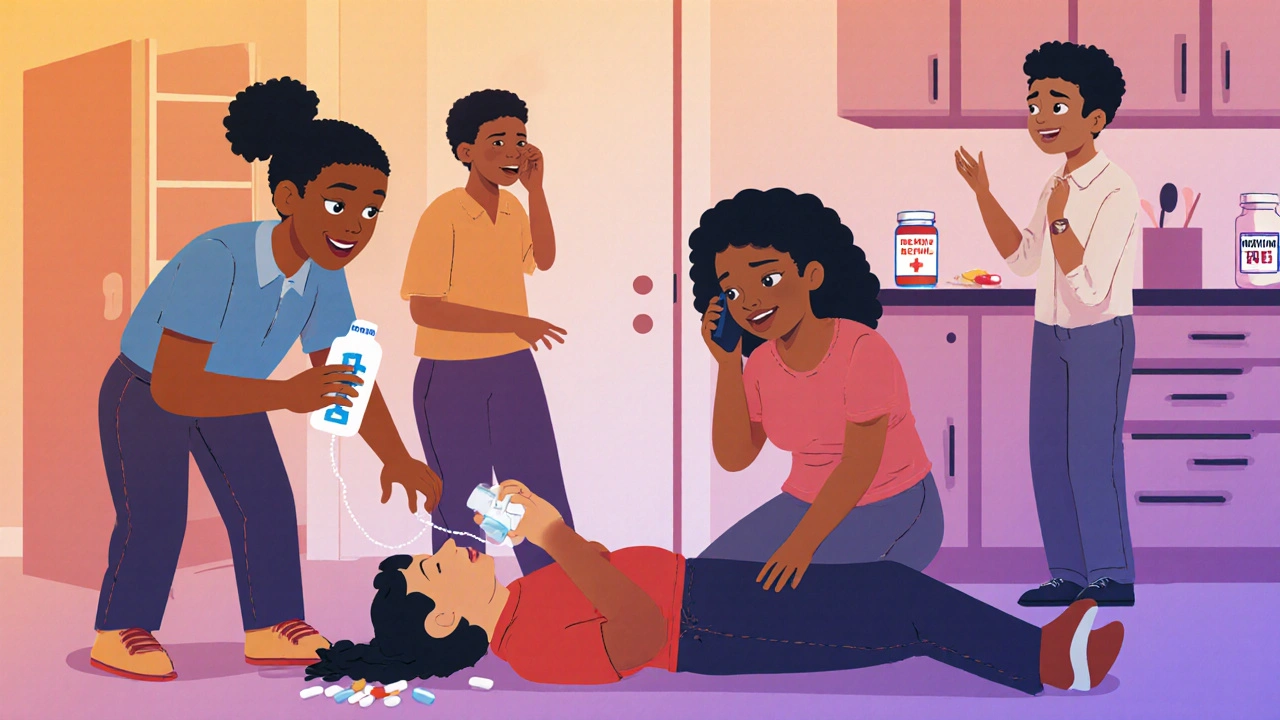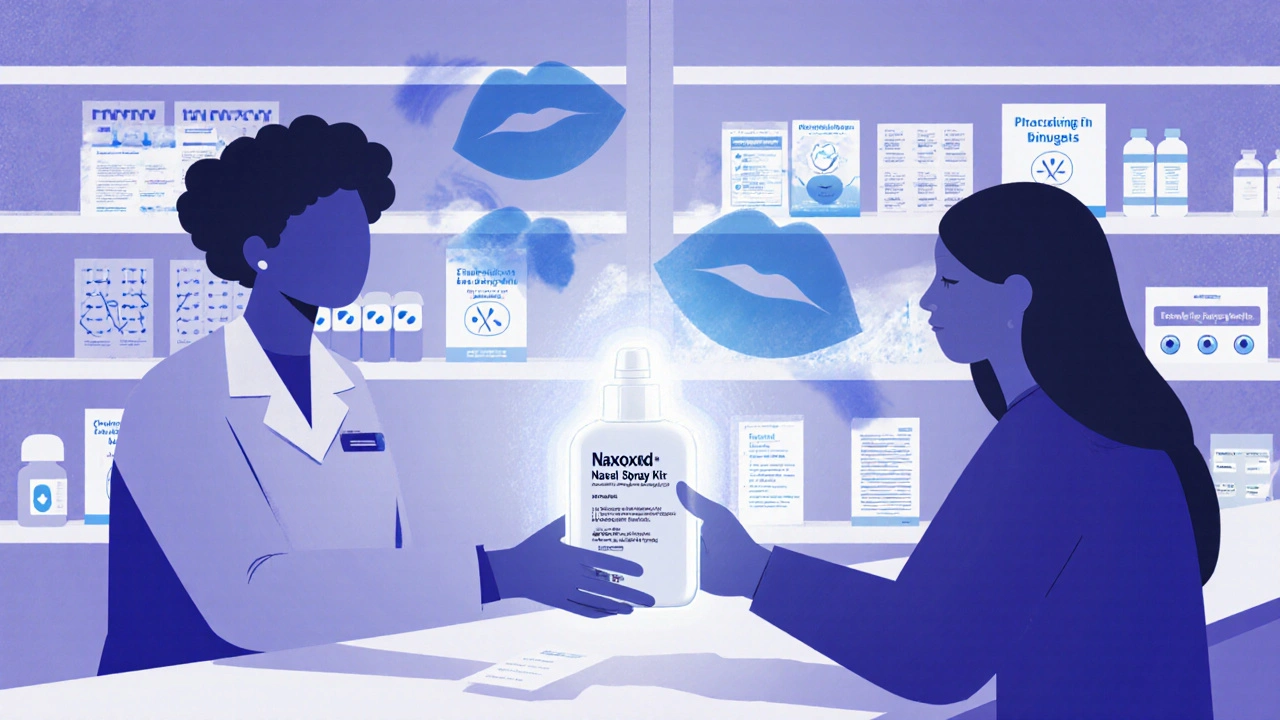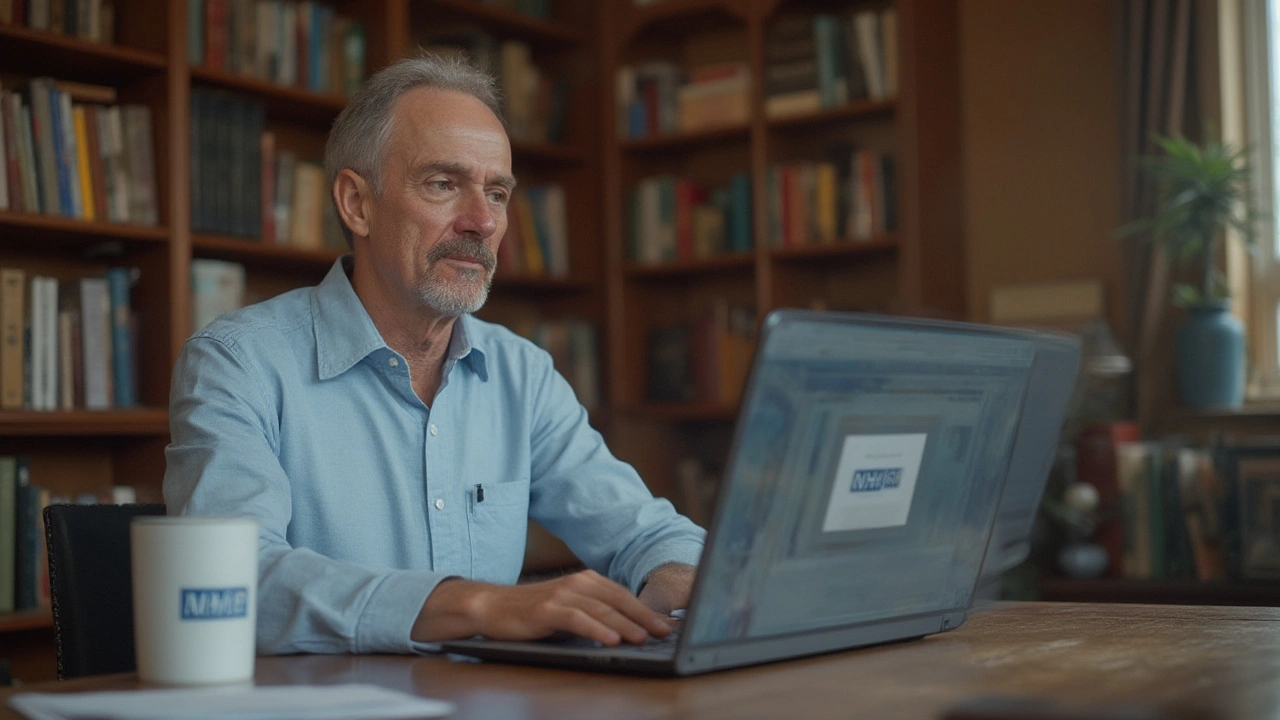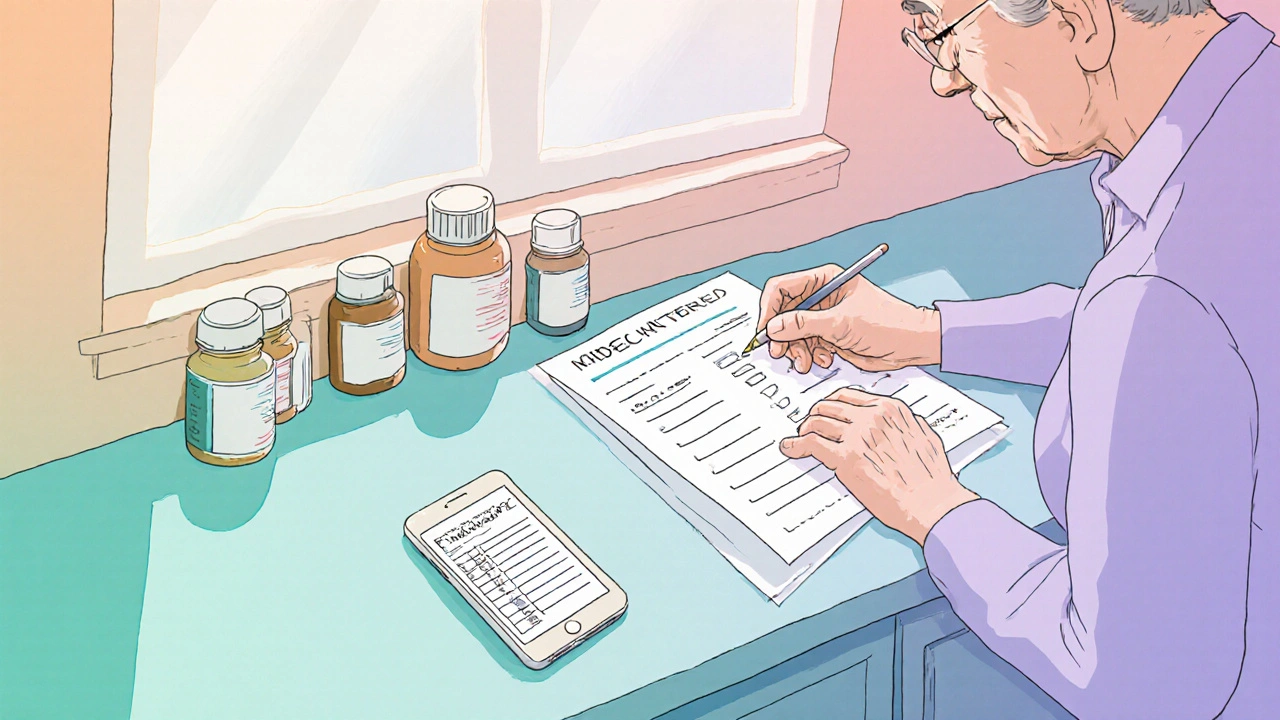
Opioid Overdose Response Checklist
Use this checklist to ensure you know how to respond to an opioid overdose. Complete all steps to save a life. In an actual emergency, always call 911 first.
Emergency Response Steps
After completing the steps, click "Check My Response" to see if you've followed the proper emergency protocol.
Every 8 minutes, someone in the U.S. dies from an opioid overdose. That’s not a statistic from a decade ago-it’s today. In 2023, over 87,000 of the 107,941 drug overdose deaths in America involved opioids, mostly synthetic ones like fentanyl. Many of these deaths happen because no one around knows what to look for-or what to do. But here’s the truth: opioid overdose is not always a death sentence. With the right knowledge, a bystander can save a life in under five minutes.
What Happens During an Opioid Overdose?
Opioids-whether prescription painkillers like oxycodone, illegal heroin, or deadly fentanyl-work by attaching to receptors in your brain that control pain and pleasure. But they also latch onto the part of your brain that tells your lungs to breathe. When too much of the drug floods your system, those breathing signals get silenced. Your breath slows. Then stops. Your lips turn blue. Your body goes limp. And within minutes, your brain starts dying from lack of oxygen. This isn’t just about people who use drugs illegally. Many overdoses happen to people taking prescribed medications exactly as directed. Others happen because pills sold as Xanax or oxycodone are actually laced with fentanyl-sometimes in doses 50 to 100 times stronger than heroin. You don’t have to be addicted to overdose. You just have to take something that contains an opioid you didn’t expect.Recognizing the Signs of an Opioid Overdose
You don’t need medical training to spot an overdose. There are three clear, urgent signs-often called the “opioid overdose triad”:- Unresponsive to shaking or shouting-they won’t wake up, even when you shout their name or shake their shoulder hard.
- Slow, shallow, or stopped breathing-you might hear gasping, gurgling, or snoring sounds. Their chest isn’t rising and falling like normal.
- Pinpoint pupils-their pupils shrink to tiny dots, even in dim light. (Note: Not everyone has this, so don’t wait for it.)
- Blue, purple, or gray lips and fingernails
- Cold, clammy skin
- Limp body, like a ragdoll
- Choking or gurgling noises
- Extreme drowsiness or inability to stay awake
What to Do Right Now: The 3-Step Emergency Response
There’s no time for panic. There’s only time to act. Follow these three steps exactly as recommended by the CDC, Health Canada, and emergency medical services worldwide:- Call 911 immediately-even if you’re not sure. Say: “I think someone is overdosing on opioids.” Emergency dispatchers are trained to guide you through the next steps while help is on the way.
- Give naloxone if you have it-it’s safe, easy, and works fast. You don’t need to be a doctor. Naloxone doesn’t work on cocaine, meth, or alcohol. But if opioids are involved, it can reverse the overdose in 2 to 5 minutes.
- Stay with them until help arrives-even after they wake up. Naloxone wears off in 30 to 90 minutes. Opioids can stay in the body much longer. They could slip back into overdose once the naloxone wears off.

How to Use Naloxone: Simple, Safe, and Effective
Naloxone is available as a nasal spray (like Narcan or Kloxxado) or as an auto-injector. The nasal spray is the most common for non-medical use. Here’s how to use it:- Remove the device from its package. Don’t test it. Don’t check if it’s expired-use it anyway if you think it’s needed.
- Place the tip of the spray into one nostril. Tilt the person’s head back slightly.
- Press the plunger firmly to deliver the full dose.
- Remove the device and call 911 if you haven’t already.
- Start rescue breathing if they’re not breathing: pinch their nose, give one breath every 5 seconds.
- If they don’t wake up after 3 minutes, give a second dose in the other nostril.
Where to Get Naloxone-No Prescription Needed
In 49 U.S. states and many countries including Canada and New Zealand, you can get naloxone without a prescription. Pharmacies like CVS, Walgreens, and local community health centers often stock it for free or for under $30. Some cities offer free naloxone kits through public health programs. In New Zealand, naloxone is available through community overdose prevention programs, needle exchanges, and some pharmacies under a pharmacist’s authority. Ask for it by name. Don’t be shy. You’re not enabling drug use-you’re saving a life.What Happens After the Overdose?
Once emergency services arrive, they’ll check vital signs, give oxygen, and may give more naloxone. But the work isn’t done when they wake up. Many overdose survivors suffer brain injury, heart problems, or lung damage from lack of oxygen. They need a full medical check-up. More importantly, they need support. Overdose is often a cry for help. Many people who survive one overdose will try again unless they get treatment. That’s why follow-up care matters: counseling, medication-assisted treatment (like methadone or buprenorphine), and mental health services can break the cycle. Community programs like Virginia’s REVIVE! program have shown that when people are trained to use naloxone and connected to care, overdose death rates drop by up to 14%. This isn’t just about reversing overdoses-it’s about giving people a second chance.Preventing Overdose: Harm Reduction Works
Naloxone saves lives, but prevention saves more. Here’s what actually works:- Fentanyl test strips-these small paper strips can detect if drugs contain fentanyl. They cost less than $1 each and can be bought online or at harm reduction centers.
- Never use alone-if someone uses drugs with you, you can help if they overdose. If you’re alone, call someone before you use. Tell them what you’re taking and where you are.
- Start low, go slow-if you’re using after a break, your tolerance is lower. A dose you used to handle could now be deadly.
- Know what you’re taking-pills bought on the street aren’t what they claim. Fake oxycodone pills are now the #1 cause of overdose deaths in the U.S.
Why This Matters More Than Ever
Fentanyl is now found in nearly 7 out of 10 illicit pills seized by police. It’s mixed into cocaine, meth, and even counterfeit Xanax. You don’t need to use opioids to be at risk. You just need to take something that’s been contaminated. The good news? We have the tools to stop this. Naloxone is cheap. Training is free. And anyone-parents, teachers, friends, coworkers-can learn how to use it. You don’t need to be a hero. You just need to act. Every time you learn these signs, carry naloxone, or teach someone else, you’re changing the odds. You’re turning a statistic into a survival story.Can naloxone be used on someone who didn’t take opioids?
Yes, and it won’t hurt them. Naloxone only works if opioids are in the system. If someone has taken cocaine, alcohol, or benzodiazepines, naloxone will have no effect. But it also won’t cause harm, so if you’re unsure whether opioids are involved, give it anyway. It’s safe and could save a life.
What if I’m afraid to call 911 because I’m using drugs?
In most places, including New Zealand and all U.S. states, Good Samaritan laws protect people who call for help during an overdose. You won’t get arrested for possession if you’re seeking help for yourself or someone else. Emergency responders are there to save lives-not to punish. Calling 911 is the most important step you can take.
How long does naloxone last, and why do I need to stay with the person?
Naloxone usually works for 30 to 90 minutes, but most opioids stay in the body much longer. That means the person can slip back into overdose once naloxone wears off. That’s why you must stay with them until paramedics arrive-even if they wake up and seem fine. They need medical monitoring.
Can I use naloxone on a child or teenager?
Yes. Naloxone is safe for all ages, including children and teens. The dose doesn’t change based on age or weight. If someone of any age shows signs of opioid overdose, give naloxone immediately. It’s the same dose for everyone.
Is naloxone available for free in New Zealand?
Yes. Many community health centers, needle exchange programs, and pharmacies in New Zealand offer free naloxone kits. Ask at your local pharmacy or contact organizations like the New Zealand Drug Foundation or local public health units. You don’t need a prescription.
What should I do if I only have one dose of naloxone and two people are overdosing?
Give the naloxone to the person who looks most in danger-usually the one with the slowest breathing or blue lips. Call 911 immediately. If you have access to a second dose, use it on the second person. If not, continue rescue breathing and wait for help. One life saved is better than none.
Can I give naloxone if the person is breathing but unresponsive?
Yes. If someone is unresponsive and you suspect opioids, give naloxone even if they’re still breathing. Their breathing might be dangerously slow or shallow. Naloxone can help restore normal breathing before it stops completely. Don’t wait for them to stop breathing entirely.
Do I need training to use naloxone?
No. Naloxone nasal spray is designed to be used by anyone-no training required. The device is simple: remove, insert, push. But if you want to learn, many free online videos and community workshops are available. The more people who know how to use it, the more lives we save.




Musa Aminu
October 31, 2025 AT 07:29This is why America is falling apart. We let drug addicts roam free while good people suffer. Naloxone? Sure, save the junkies-but what about the families they destroy? My cousin died from a fentanyl-laced pill bought from some guy on the street. No one cares until it hits home. Stop coddling criminals and start locking up dealers.
They say 'harm reduction' like it's a religion. It's not. It's enabling. And now our kids are dying because we're too soft to say 'no'.
robert maisha
November 1, 2025 AT 17:00The opioid crisis is not merely a medical issue it is a systemic collapse of social trust and personal responsibility compounded by pharmaceutical greed and regulatory failure
Yet naloxone represents perhaps the most humane intervention we have managed to institutionalize in decades not because it solves the root cause but because it acknowledges the dignity of human life even when that life has been self-destructive
There is no moral contradiction in saving someone who may yet choose to die again for in that moment of reversal we affirm that death is not inevitable
Alexander Ståhlberg
November 1, 2025 AT 20:48Let me tell you something no one else will say out loud. The real tragedy isn’t that people overdose-it’s that we’ve normalized it. We’ve turned a medical emergency into a cultural punchline. We’ve got TikTok videos of people pretending to OD for clout while real people are turning blue in alleyways.
And now we hand out naloxone like candy like it’s some kind of magic bullet that absolves us of the responsibility to fix the broken systems that created this mess in the first place.
What about mental health care? What about housing? What about the fact that 80% of people who OD have a documented trauma history? We’re treating symptoms while the body politic rots from the inside.
Naloxone saves lives? Sure. But it doesn’t heal the wound. And if we keep pretending it does we’re just delaying the inevitable collapse.
And don’t get me started on how pharmacies are making a killing selling these kits for $30 while people in rural towns can’t even get a therapist on the phone.
It’s not compassion. It’s capitalism with a Band-Aid.
Robert Andersen
November 2, 2025 AT 08:11My uncle OD’d last year. We had naloxone because my sister kept one in the glovebox after her friend died. He woke up confused and mad as hell. Didn’t thank us. Called us nosy.
But he’s alive. And six months later he’s in a methadone program. Doesn’t mean he’s fixed. But he’s trying.
So yeah. Keep the spray. Use it. Don’t overthink it. Just do it.
Eric Donald
November 3, 2025 AT 19:58The clarity of this guide is commendable. The emphasis on immediate action over judgment aligns with evidence-based public health principles. Naloxone accessibility should be expanded, not restricted, as it is a low-risk, high-impact intervention.
Furthermore, the inclusion of harm reduction strategies such as fentanyl test strips and peer support reflects a mature understanding of addiction as a complex neurobiological condition rather than a moral failing.
It is imperative that communities prioritize education over stigma. Lives depend on it.
Brenda Flores
November 5, 2025 AT 14:08I just ordered two naloxone kits from my local pharmacy-$18 each, no prescription needed. I’m keeping one at home and one in my work bag. My brother’s a recovering addict and I don’t want to ever lose him again.
Also, I just learned that fentanyl test strips are like $1 each on Amazon. I’m ordering a pack for my cousin who still uses. I’m not judging. I’m just… here.
🥺🙏
Jackie R
November 6, 2025 AT 04:32If you’re using drugs, you deserve to die. Naloxone just lets you keep doing it. Stop rewarding bad choices.
Josh Arce
November 6, 2025 AT 15:54Wait so you’re telling me if I give someone naloxone they might just OD again? So it’s like a reset button for junkies? That’s not a cure that’s a loophole. Why not just let nature take its course? Less paperwork.
Also I heard naloxone makes you throw up. Is that true? That’s kinda funny.
Eli Grinvald
November 6, 2025 AT 17:40My best friend used to work at a needle exchange in Portland. She said the most powerful thing she ever saw was a guy who’d OD three times. Third time, he woke up, hugged the EMTs, and said, ‘I think I’m done.’
He’s been clean for 4 years now.
So yeah. Keep the spray. Keep the hope.
❤️
Alexis Hernandez
November 7, 2025 AT 13:09I used to think naloxone was some kind of magic drug. Turns out it’s just… a tool. Like a fire extinguisher. You don’t ask if the person deserved to start the fire. You just put it out.
And honestly? The fact that you can get it at CVS like you can get bandaids? That’s kinda beautiful. We’re finally starting to treat this like a health crisis, not a crime.
Also, fentanyl test strips? I carry them now. Like, I literally have one in my wallet. Feels weird. Feels right.
brajagopal debbarma
November 7, 2025 AT 19:41Wow America spends billions on naloxone but can't fix the school system? Smart.
Next they'll give out parachutes to people who jump off buildings. At least then they can say they tried.